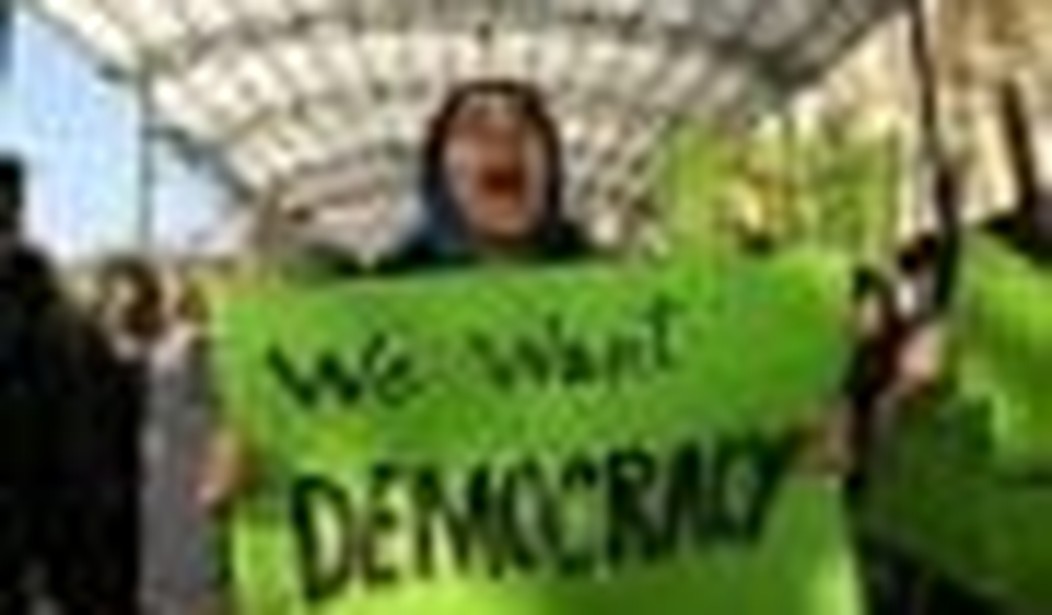December 7, which in the Persian calendar falls on the 16th day of the month of Azar, is known as Student Day in Iran.
The origins of this day go back to 1953. On December 7 of that year, Iranian students poured into the streets of Tehran to protest the overthrow of democratically elected Prime Minister Mohammad Mosadegh by the CIA and MI6. The students were venting their anger at the West, and at the Shah, whom they accused of collaborating with the West in what was yet another Western-initiated regime change in the Middle East. The Shah’s police brutally put down the demonstrations, thus etching this day in the history of Iranian students and their struggles for political change in Iran.
On the same day, but this time in 2008, Iranian students from major cities such as Tehran, Shiraz, and Hamedan protested against President Mahmoud Ahmadinejad. This time they protested in great numbers about imprisonment and torture of students, expulsion of lecturers, poverty, abuse of human rights, dictatorship, and looting of their country’s wealth by foreign powers such as China and Russia.
The demonstrations this year were bigger and more violent. The Iranian government was aware and worried. So much so that Iranian Supreme Leader Ali Khamenei canceled an appearance with the students. Until recently, the government had used the anti-Western sentiments of the original demonstration in 1953 to serve its anti-Western propaganda goals. In fact, students were encouraged to demonstrate. During the early days of the revolution, even young school children, including myself, were taken to rallies.
However, these days, Iran’s leadership is becoming worried about the blowback. The Iranian people, especially young students, are angry, and they are becoming less afraid to show it. A vivid example (see video here) took place at the main university in the city of Shiraz in early November. Addressing Ali Larijani, who is currently the speaker of the Majlis, one student said in front of hundreds of others that “I don’t recognize you as the head of the Majlis, because the parliament is illegitimate, due to massive disqualification of candidates.”
The student, who then went on to complain about problems suffered by the Islamic students union, to the amazement of the audience, told Larijani: “Let me tell you about my grievances. I hate three things. 1. I hate Mahmoud Ahmadinejad. 2. I hate the way he tries to fool the people of Iran. 3. I hate his shinning halo (referring to Ahmadinejad’s claims that he felt he was surrounded by a halo during his speech to the U.N. General Assembly in 2005).” Larijani was left speechless by the remarks and the fact that many students cheered on the speaker. Later on, pro-Ahmadinejad students tried to reclaim control by chanting pro-Ahmadinejad slogans. But it was too late – the damning words had already been immortalized on video and circulated on the Internet.
Fearing that Student Day celebrations could turn into another opportunity to demonstrate, extensive security measures were put in place in numerous universities, including Tehran. At the start of the day, students were unable to enter Tehran University, due to the presence of large numbers of uniformed and plain-clothes policemen who were standing in the surrounding streets. However, by midday the students were able to smash the locked gates of the university and enter the premises. The security forces were not taking any chances. As soon as the students entered, they started to attack them. According to the student-run Amir Kabir University news agency, one young student is still in a coma after his head was repeatedly smashed against the gates by police. Others were detained. However, in one remarkable case, three students who were arrested by university security forces were later freed by their friends.
Once inside, many students sang nationalistic songs and shouted chants such as: “Death to the dictator,” “Ahmadinejad, you are Pinochet, Iran won’t become Chile,” “Ahmadinejad: cause of racism and corruption,” “Students prefer death to subjugation,” “Women’s rights are human rights,” and “We won’t be silenced by threats and arrests.” Others held banners, some of which were written in English and carried messages such as “We want democracy.” According to the reformist Emrouz publication, some students burned flags bearing swastikas in order to show their distaste for fascism, which the Ahmadinejad government has come to represent to them.
However, one placard more than others was meant as a message to the outside world. Written in Farsi, it said: “Democracy and human rights in Iran: peace in the world.” In other words, a solution to global problems lies in Iran. Once Iranians enjoy human rights and democracy, then the world will see peace.
Pro-government press in Iran tried its best to dismiss the demonstrations. The right-wing Fars news agency called the demonstrators “trouble makers.” It then accused the students of throwing stones at security forces and at university windows. Meanwhile the pro-Ahmadinejad Raja news agency described the demonstrators as “fanatics.” It then tried to discredit them by solely focusing on their demands not to separate male and female students. In terms of verbal attacks against officials, Raja news only reported about chants against Ayatollah Khatami, the former reformist president. No mention was made about the extensive chants against Ahmadinejad by any of the pro-government news agencies. Furthermore, government news agencies put the number of demonstrators at 150 and they only reported about demonstrations in Tehran. The Society for Strengthening of Unity, which organized the demonstrations, put the number at 3,000.
The election of Mahmoud Ahmadinejad has been the most provocative decision taken by Ayatollah Khamenei. No other president in post-revolution Iran has been so internally divisive. The economic damage caused by Ahmadinejad has been greater than anything the backers of U.N. sanctions could hope for. The divisions and infighting caused within the regime, and even within the conservative movement due to his policies, is bigger than what the CIA and the Mossad could realistically carry out. The recent student demonstrations are very unlikely to lead to regime change in Iran. Therefore, Western governments should not get too excited. However, if Ayatollah Khamenei backs and elects Ahmadinejad again in the next elections, we could witness bigger and more violent demonstrations.
In fact, if Khamenei does not allow experience to be his teacher, and does not learn from his mistakes, it is probable that if one day his administration falls apart, the start of its end by the people of Iran will be traced back to the era of Mahmoud Ahmadinejad as president.









Join the conversation as a VIP Member